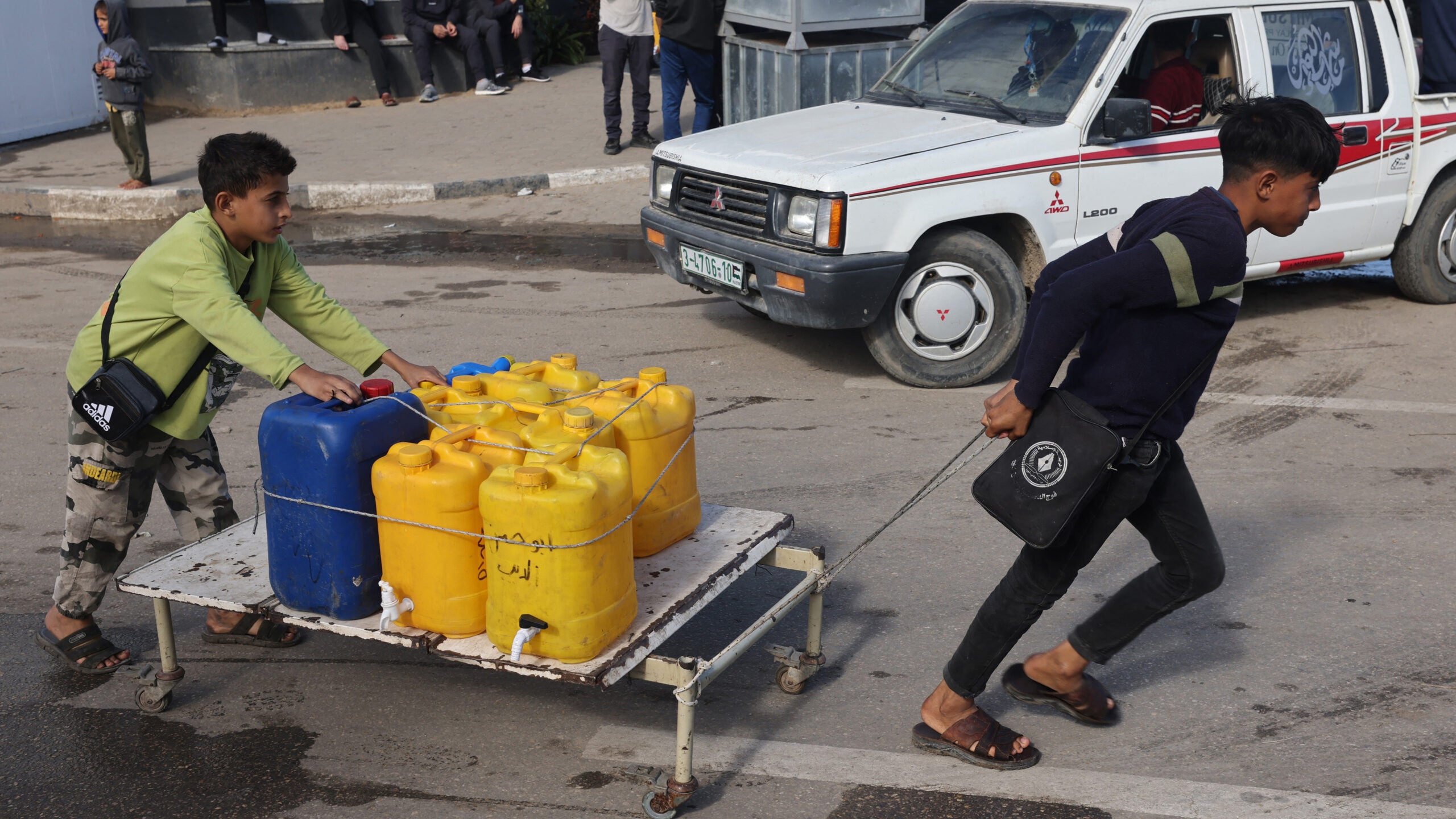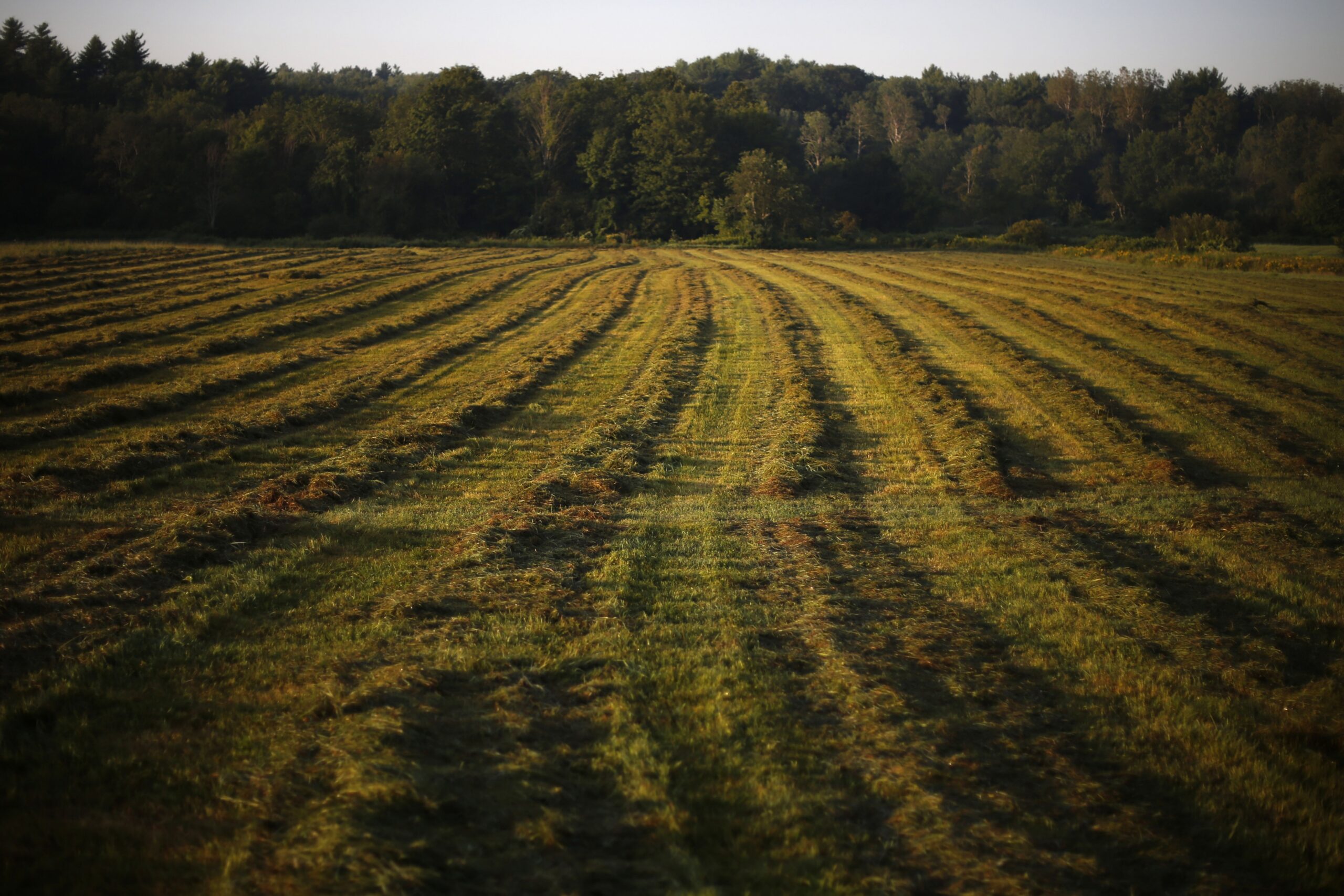RAFAH, Gaza Strip — For Nidal Al Barrawi, his wife and eight children, the struggle to get enough water in Gaza has become a big part of the family’s daily routine.
The family fled to Rafah, near the Egyptian border, in recent weeks as fighting intensified around their home in northern Gaza.
Now, just filling containers with the 20 liters (5 gallons) they can get per day for drinking, cooking and bathing means waiting in line from early morning until noon at a water distribution point.
News with a little more humanity
WPR’s “Wisconsin Today” newsletter keeps you connected to the state you love without feeling overwhelmed. No paywall. No agenda. No corporate filter.
Still, he says, “it is not enough for the children.” It’s not enough for him or his wife, either. “Personally, I haven’t had a shower in 20 days due to lack of water,” he says.
The United Nations recommends a minimum of 50 liters (13 gallons) of water per day per person for drinking, cooking and bathing. But like Barrawi and his family, most are making do with a fraction of that.
Even before the war, Gaza struggled with water supply
The Gaza Strip has no streams, lakes or other surface sources of water. In the years prior to the war, water for bathing and laundry in the Palestinian territory has come mostly from a coastal aquifer that had become contaminated. About 97% of the water from that source doesn’t meet World Health Organization standards for human consumption, the U.N. says.
So for its drinking water, Gaza has come to rely almost entirely on more than 150 desalination plants built in the last decade, about 80% of them privately run. About 90% of Gaza’s households purchase their potable water from these desalination plants, according to the U.N. Office for the Coordination of Humanitarian Affairs in 2019.
Two Israeli pipelines also supply some potable water. The pipelines were shut down in the first few weeks of the war, but have now been restarted, according to Israel’s Coordination of Government Activities in the Territories office.
Palestinians in Gaza are drinking salty, contaminated water
The sole desalination plant still operating in Rafah, where most of Gaza’s internally displaced population is now concentrated, is operated by Eta Water Company.
The plant’s senior manager, Yousef Abdul Salam Yaseen, says the facility used to serve some of the 300,000 people in the region. But since the start of the war, the population of Rafah has ballooned to 1.5 million as people fled southward to escape the fighting.
“We can’t produce enough water for them,” Yaseen says. “But we are doing everything we can.”
He cites a shortage of fuel to run the generators needed for the power-intensive process to purify water, known as reverse osmosis. The plant, and others like it, take in water from the Mediterranean Sea, pump it up to very high pressure and then push it through an ultra-fine membrane to remove salt and other contaminants.
Eta owns three desalination plants in Gaza. The other two — one near Gaza City and another in Jabaliya in northern Gaza — are offline, Yaseen says. “One was bombed. The other, we don’t have any information on.”
Before the war, about 500 trucks a day crossed into Gaza, providing fuel and other supplies. On a good day now, only about 100 arrive. So, there’s just not enough fuel to go around, Yaseen says.
The water situation in Gaza was fragile even before Hamas’ Oct. 7 attack that killed 1,200 people, according to Israel. In its subsequent air-and-ground attack on Gaza, Israel has killed more than 21,000 Palestinians, according to Gaza health authorities, and knocked out power to much of the Gaza Strip.
Catherine Russell, the executive director of the United Nations Children’s Fund, or UNICEF, warned earlier this month that access to clean water had become so limited that “children in Gaza have barely a drop to drink.”
UNRWA, the U.N. agency providing relief to Palestinian refugees in the Gaza Strip, says 70% of the population is drinking salty and contaminated water.
That concern is echoed by Pedro Arrojo Agudo, the U.N. special rapporteur on the human rights to safe drinking water and sanitation. In the absence of alternatives, he says, “of course they are drinking contaminated water with all the risks.”
Those risks include cholera and other waterborne diseases, he says.
How Gaza’s water infrastructure devolved
Israeli troops and settlers occupied the Gaza Strip from 1967 until 2005, when Israel pulled out of the territory. Ran Suckeveriene, the head of the water engineering department at Israel’s Kinneret Academic College, says when Israel disengaged from Gaza, the water infrastructure there was in good shape. Clean drinking water could still be drawn from the coastal aquifer, he says, and sanitation facilities were treating wastewater.
“They didn’t manage it well,” he says of the Gazans after Israel left. He says the government in Gaza allowed thousands of illegal wells to be drilled, depleting the coastal aquifer. Without proper waste treatment facilities, it then became contaminated, he says.
“Not only did they not take care of the water pumping” from wells, but they “allowed the water to become contaminated,” with seawater and untreated sewage, he says.
Israel has long complained about untreated sewage seeping across the border and being flushed directly into the sea, washing up on its beaches. But with Israel’s blockade of Gaza and its ban on the entry of “dual use” items — deemed to have both civilian and military applications — into the Strip, maintaining drinking water and wastewater treatment facilities has been difficult.
As NPR reported last year, Israel has blocked cement to build new sewage treatment plants and spare parts to keep existing ones operating. Israel also says Hamas is using water pipes to make rockets that the militant group uses to target Israeli territory.
Depending on how much damage has been done to desalination plants, it could take a long time to get Gaza’s water infrastructure up and running again after the war is over, says Peter Gleick, a senior fellow and co-founder of the Pacific Institute, a non-profit water think tank.
“It’s going to take a lot of money. Repairing Gaza’s water system is not just getting the sources back online, but it’s getting the infrastructure to deliver the water back in place,” he says.
That means water mains, many of which may have been damaged or destroyed during Israel’s bombardment, Gleick says.
But if the desalination plants aren’t damaged, “it’s just a question of getting fuel to them so that they can operate, getting the energy to them so they can be turned back on,” he says.
Until then, Gleick says, “it’s going to be humanitarian aid in the form of bottled water.”
NPR producer Anas Baba reported from Rafah. NPR’s Scott Neuman reported from Tel Aviv, Israel.
9(MDAyMjQ1NTA4MDEyMjU5MTk3OTdlZmMzMQ004))
© Copyright 2025 by NPR. To see more, visit https://www.npr.org.9(MDAyMjQ1NTA4MDEyMjU5MTk3OTdlZmMzMQ004))






